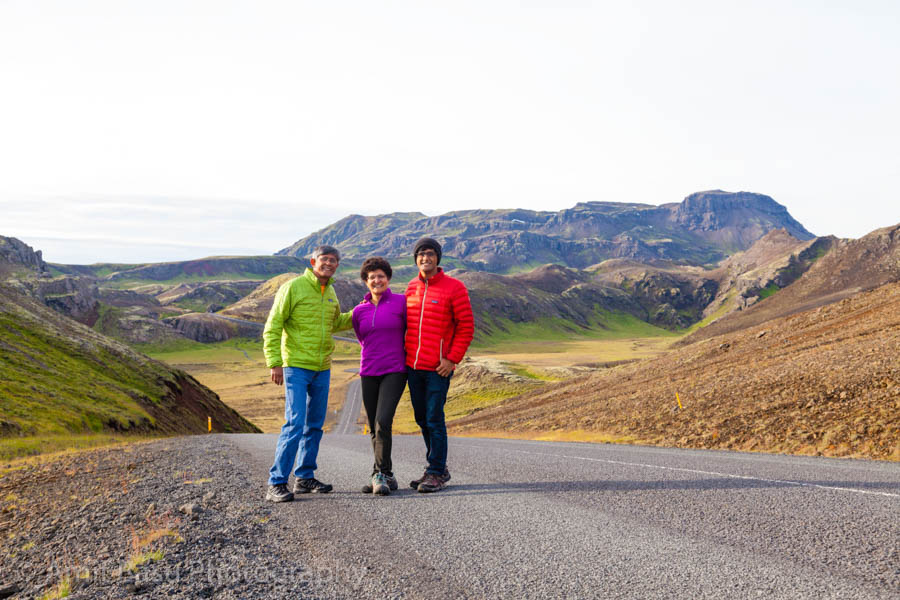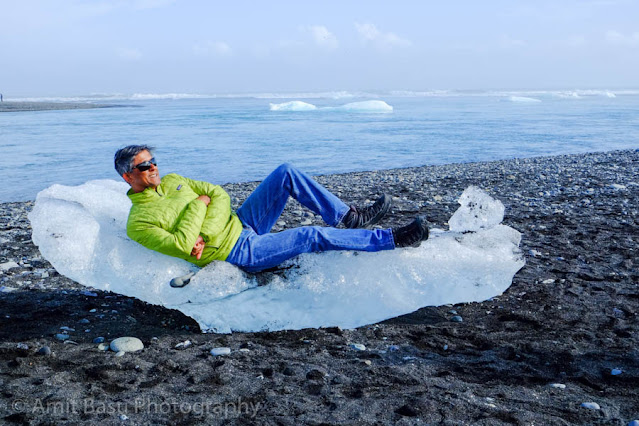Thingvellir National Park, Iceland, on the Golden Circle
It was a summer morning - actually very early morning - like 4am, when we landed in Iceland for the first time a few years ago. Excitement was at its peak, so, as soon as we got hold of a rental car, we set off to explore Iceland. The sky was cloudy, but there was faint light. It was Icelandic summer, after all.
The long drive towards Reykjavik passed through bleak-looking largely-empty landscape, and then, soon, we were in Reykjavik, which looked like a more modern European city. But we were not going to stop in Reykjavik. In fact, we were going to bypass Reykjavik more or less in our entire trip. This trip was dedicated to Iceland countryside and its fabled natural wonders. Iceland is largely devoid of people, a total of about 373 thousands or so. Most Icelanders, about two-thirds of them, live in Reykjavik. Rest of the country has more sheeps than people.
We mostly bypassed Reykjavik, driving along its southern end, only for a brief stop at a N1 petrol (yes, petrol, not gas :-) ) station for a quick breakfast. It is there that we first got acquainted with Skyr, an Icelandic yoghurt that is incredibly rich and creamy. Skyr would be on our menu during the entire trip.
Out of Reykjavik, we got on a less-travelled road, the Highway 435, which cuts across an empty landscape towards the Thingvellir National Park, a part of the so-called touristic "Golden Circle", or "Golden Triangle". The road was empty. We crossed just one vehicle in our entire trip. The scenery around the road was empty too, except for a few sheep who looked at us curiously. Along the road ran a pretty large pipeline, a few feet in diameter. We wondered what that could be. Later on we learned that it carried hot water to Reykjavik from geothermal springs further east. This hot water main provides for about 40% of the demand for heating and other usage of Reykjavik.
Closer to Thingvellir, the landscape got more green and interesting. The road curved in many winding ways. We stopped by the roadside just to soak in the beautiful scenery. R did his bit of rock climbing. There was a subtle but funny smell in the air. We realized that we were standing next to some geothermal vents. If you looked carefully, you could see faint, wispy threads of steam coming out of the ground.
A little further on was the real thing. A large geothermal plant could be seen down in the valley. We learned that Iceland gets nearly all its electricity and heating needs from the geothermal plants. The island is sitting on top of many active volcanos. In our trip we did not see any volcano eruption, but the evidences of a super hot underbelly of Iceland were everywhere, from geothermal plants to hot springs, and, of course, volcanos that have erupted only recently. Remember Eyjafjallajökull, that erupted in March 2010, and disrupted air traffic over Europe?
The geothermal plant here is Nesjavallavirkjun, a plant that converts steam into electricity.
Finally we were in Thingvellir. The first thing you see is a huge lake, Thingvallavatn. The lake was shimmering in the sunlight.
Thingvellir (literally meaning "Assembly Plains"), apart from being a geologic wonder, the park is also rich in history. Major events in the history of Iceland have taken place here. We came across the remains of ancient Icelandic parliament Alþingi which was founded in 930 AD, and continued till 1798. It is considered to be the oldest parliamentary institution in the world. Was democracy first born here?
You walk through a path that is surrounded on both side by high walls of rock. After all, you are walking between two tectonic plates! The gorgeous waterfall Oxararfoss tumbles down in cascades from one of the walls, and gurgles along the rift valley. The place is full of cracks on the ground, reminiscent of the struggles of Mother Earth to stay together as one piece. We jumped into some of these cracks for fun. Luckily there were no movement of the crust at that time.




















Comments